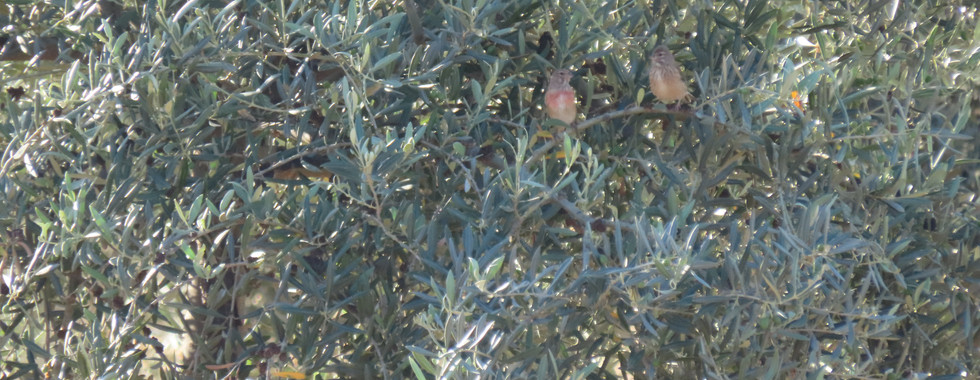2021 was a busy year for ornithology and bird monitoring in the Framework project. All across Europe our project partners have been organising bird monitoring activities in line with the FRAMEwork protocol. This has included sampling in tracts, working with local non-profits and bringing in local professional ornithologists. Read on for a selection of the most interesting bird monitoring activity that happened across our farmer clusters this year.
© Martin Matěj
Beginning the year in Spain, FA conducted another round of bird monitoring in February. They monitored game species (including red-legged partridges, wild rabbits, hares and thrushes), raptors and songbirds. This was done by vehicle through a linear transect, twice in a period of two weeks and in the two different areas (Experimental and Control). The night transects were done with spot-light help.
The first dedicated bird monitoring was carried out in May. In accordance with the instructions, the areas were divided into 1 km2 zones and itineraries were planned on the Project plots and in the Control zone, with a route of 1 km. The monitoring days were May 7th, 2021 (experimental) and May 10th, 2021 (control) for the first round, and May 14th, 2021(experimental) and May 17th (control) for the second round.
Thrushes monitoring was also carried out for the second consecutive year. This monitoring aims to assess the evolution of the thrush population over time. The thrush census allows generating synergies between the Framework Project and the Artemisan Foundation's Thrush Project since the data will be valid for both projects. They conducted census in 2 10x10km grid, one in the experimental area and the other in the control one, during the 1st and 14th December 2021.
© Artemisan Foundation
In our Czech cluster, CZU invited Czech Birdlife (Czech Society for Ornithology) to the farmer cluster meeting in June to give a presentation about the bird species present in the region and measures to support birds of prey for natural pest control. Further, the first birdhouse for birds of prey was installed at the FC meeting in August.
The baseline bird monitoring was carried out by Czech Birdlife on July 21st in one part of the Farmer Cluster. In total six transects were monitored, following a slightly different protocol to suit local conditions. Some of the transects run through fields (which is different to the FRAMEwork methodology), as it is assumed that changes within fields are likely to happen, e.g. splitting of large fields, plantings within fields. Further, Czech Birdlife uses a special app that Czech ornithologists are used to.
Finally, our Italian cluster overcame the natural obstacles presented by the regional landscape to complete their bird monitoring this year. An ornithologist was hired to perform the monitoring of the baseline avifauna performed in June. This task is extremely time consuming and laborious – and more so because in the hilly area it is not easy to move from one transect to the next one.
Thus, in June, July and September the baseline sampling was performed in the FC area in Calci and in the control area in Vicopisano, in a total of 12 squares. The ornithologist recommended to avoid doing the bird sampling in the Vicopisano area because he noticed that in fact it was already too late in the season to catch the diversity of birds that can be found in this area. Due to warm weather the mating season ended early and birds very less active. Therefore, the bird sampling will be repeated in 2022, early in the season in the FC area and in the control area.
The table below shows the list of species found in the 6 quadrates of Calci.
















































Commentaires